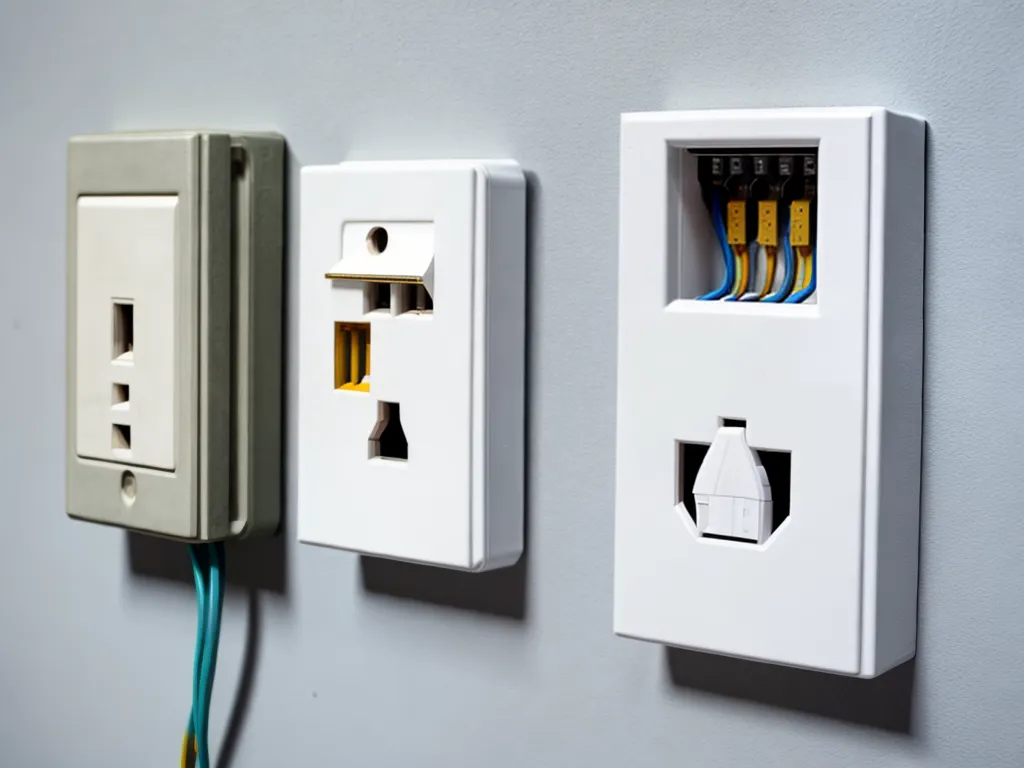
Switched receptacles can help you reduce electricity costs by giving you better control over what devices are drawing power at any given time. With a regular receptacle, plugged-in devices will continue to draw power even when turned "off." But a switched receptacle allows you to completely cut power to the outlet, preventing phantom energy drainage from devices that are plugged in but not in use.
What is a Switched Receptacle?
A switched receptacle is a regular 120V outlet that has been wired to a light switch. This allows you to turn power on and off to the outlet using the switch.
Switched receptacles are typically wired in one of two configurations:
- Half-switched - The top outlet is controlled by the switch while the bottom outlet is always on.
- Fully switched - Both outlets are controlled by the switch, allowing you to turn off power completely.
Switched outlets are wired to a light switch just like a ceiling light would be. Flipping the switch breaks the hot wire connection, cutting power to the receptacle.
How Switched Outlets Save Electricity
Leaving devices plugged into regular receptacles when not in use contributes to phantom energy loads. This refers to electricity that is being drawn constantly by electronics in idle mode.
Some examples of phantom load devices:
- Phone chargers
- Computers and monitors
- Appliances with digital displays
- Gaming consoles
- Printers
- Smart speakers and assistants
Having these devices continually plugged into live outlets can waste 100-200 kWh annually per home. By installing switched receptacles, you can completely eliminate phantom loads by cutting power to the outlet when it's not needed.
Other ways switched outlets can reduce energy costs:
- Turn off lamps, fans, and other plug-in devices to reduce standby power usage
- Deactivate outlets used for holiday lighting when not in use
- Cut power in infrequently used rooms like guest bedrooms or basements
Choosing Switched Outlet Locations
When selecting where to install switched receptacles, focus on areas where devices are often left plugged in but not in use. Some of the best places for switched outlets include:
-
Entertainment centers - Turn off TVs, stereos, streaming devices and gaming consoles when not in use. A fully switched outlet behind the entertainment center can cut power to everything at once.
-
Office spaces - Control computer workstations and accessories like printers, scanners and chargers with a wall switch.
-
Kitchen counters - Switched outlets near countertops allow you to easily turn off coffee makers, mixers and other counter top appliances.
-
Bedside tables - Eliminate vampire energy loss from alarm clocks, phone chargers and lamps with half-switched outlets controlled from bedside.
-
Holiday lighting - Installing switched exterior outlets used for holiday lights allows you to completely deactivate when not needed.
Wiring a Switched Outlet
Warning: Working with electrical wiring carries risk of electrocution. Consult a qualified electrician if you do not have experience.
Wiring a switched receptacle is done by connecting it to the hot source leading to the light switch:
Materials Needed
- Electrical box for outlet
- Receptacle
- Cable/wire
- Wire stripper
- Voltage tester
Steps
-
Turn off power to the circuit at main breaker panel. Verify it is off with a voltage tester.
-
Open the switch box and outlet box you are wiring together.
-
Run a 3-wire cable from the switch box to the outlet box.
-
Secure the new outlet and connect the ground wire to grounding screw or terminal.
-
Connect the neutral (white) wire from outlet to neutral terminal on outlet.
-
Connect the hot source wire from the switch to the hot terminal on the outlet.
-
Connect the switched hot wire running to the switch to the other hot terminal.
-
Secure all wires, outlets and switches. Attach faceplates and covers.
-
Restore power and test outlet switching on and off.
Follow all local electrical codes. Consider hiring an electrician if you lack experience with household wiring.
Cost of Installing Switched Receptacles
The cost to install a switched receptacle will depend on the number of outlets and complexity of the wiring:
-
Electrician Installation - $125-$300 per switched receptacle. More for hardwired fixtures.
-
DIY Installation - $20-$100 per outlet including parts. Higher end if wiring from scratch.
While not free, switched receptacle installation costs can pay for themselves over time through energy savings. The amount saved will depend on the devices powered through the outlet.
Final Tips for Switched Outlet Savings
-
Consider occupancy sensors or timers to automatically control switched outlets without having to flip the light switch manually.
-
Label switched outlets clearly so you remember to turn them off when not in use.
-
For maximum savings, install fully switched outlets rather than half-switched.
-
Prioritize high electricity use devices like computers and entertainment systems for switched outlets.
-
Combine switched outlets with other conservation habits like turning off lights, lowering thermostat set temperature, and unplugging devices when away.
Installing switched receptacles throughout your home provides simple yet effective control over plugged-in devices. By completely cutting power to outlets when not needed, switched receptacles can provide substantial savings on your electricity costs over time.